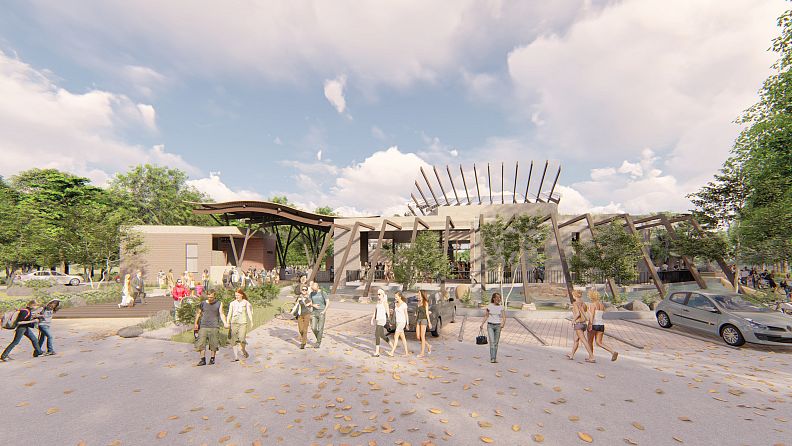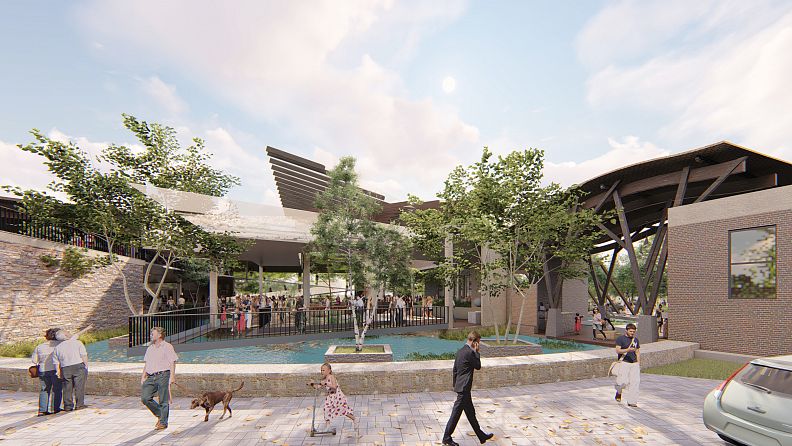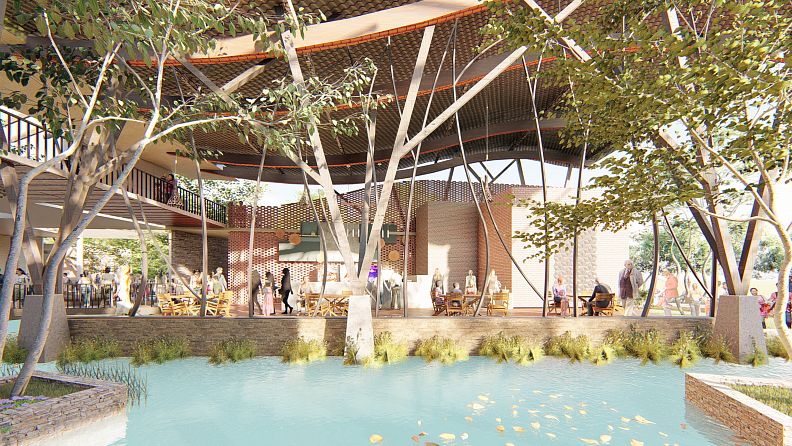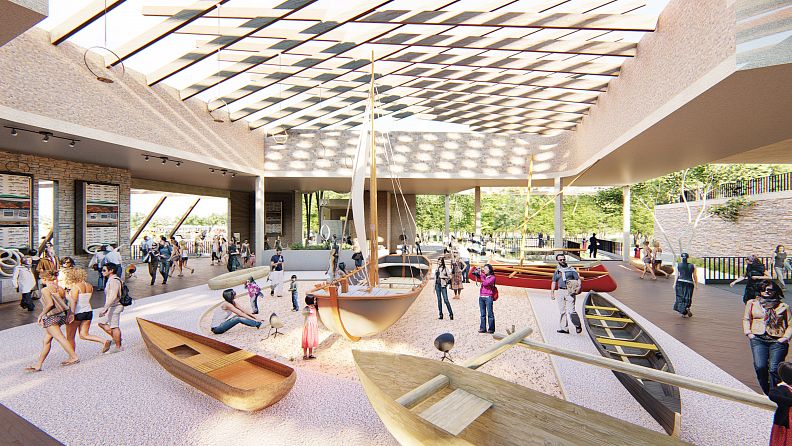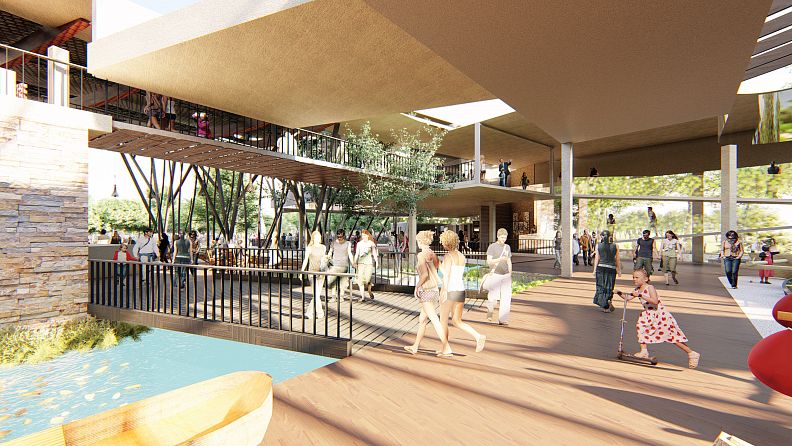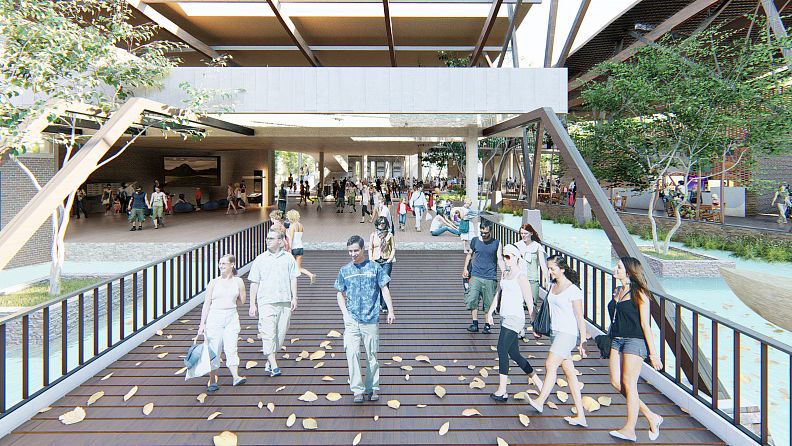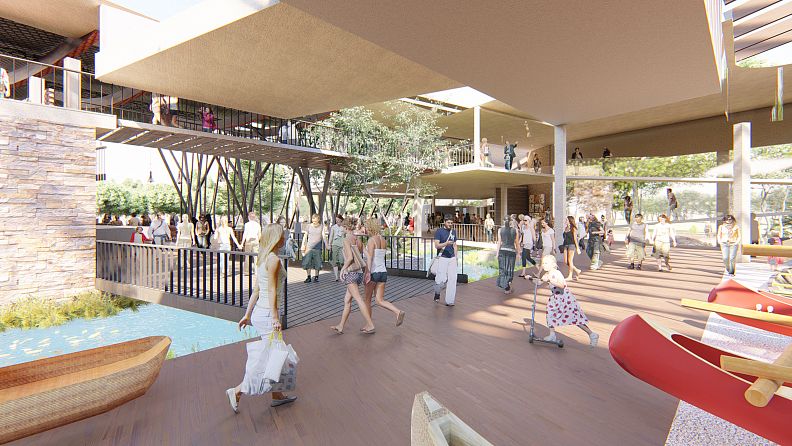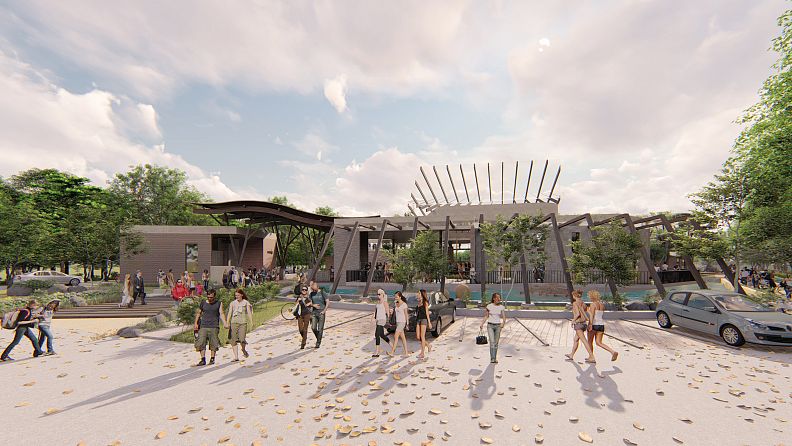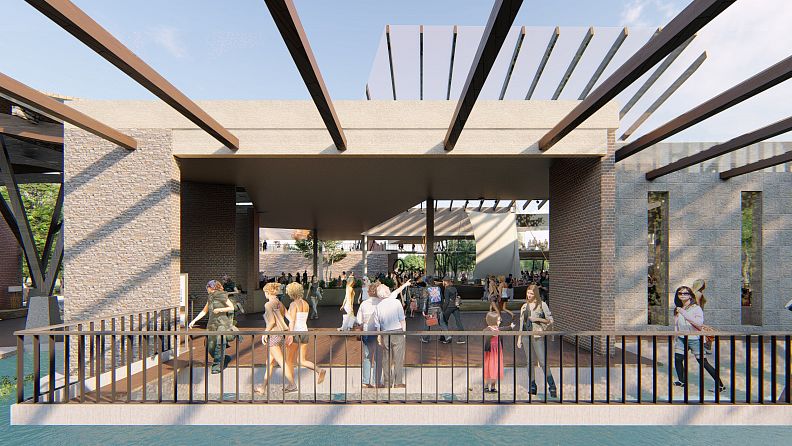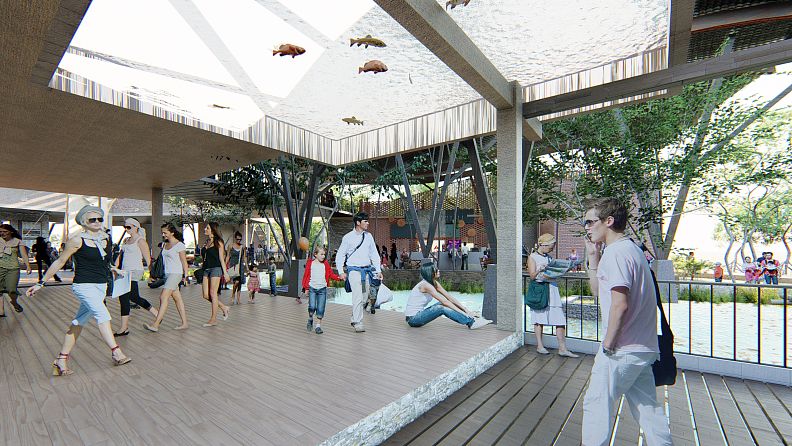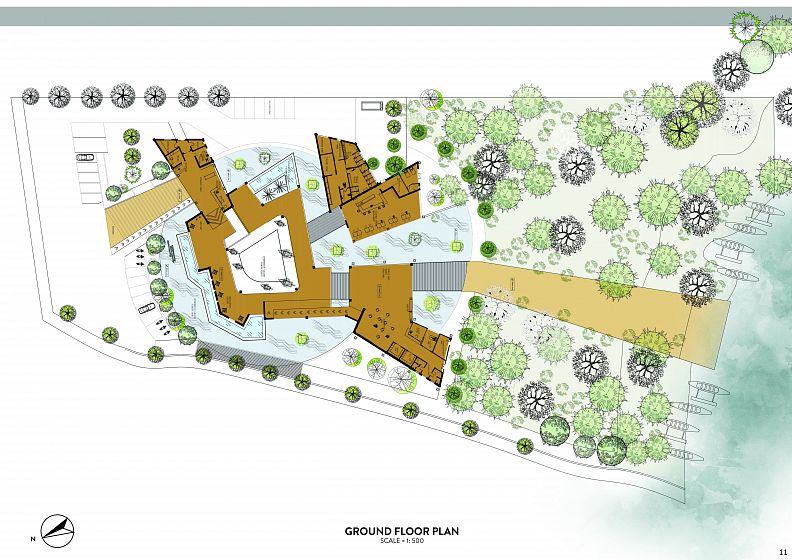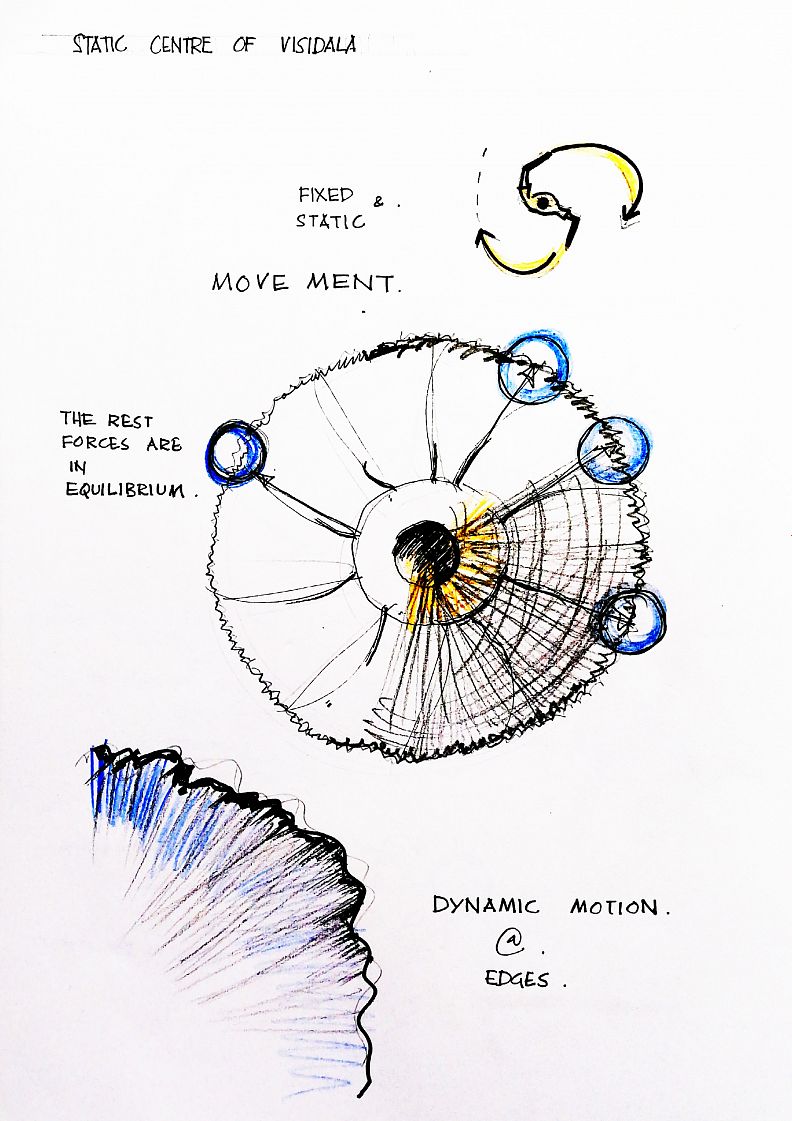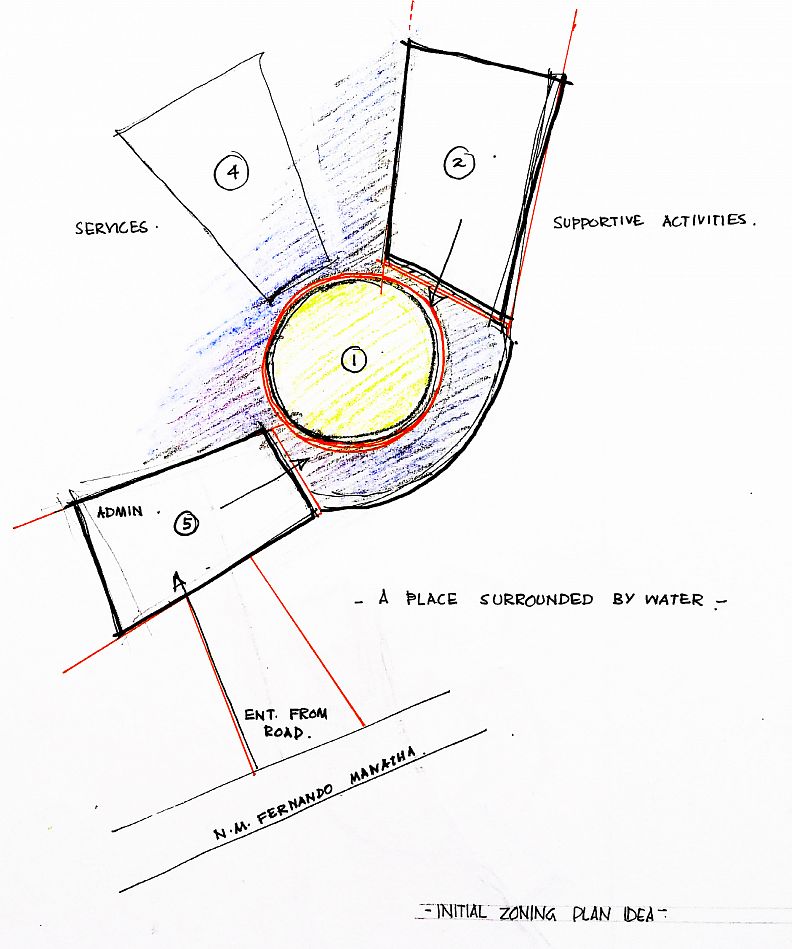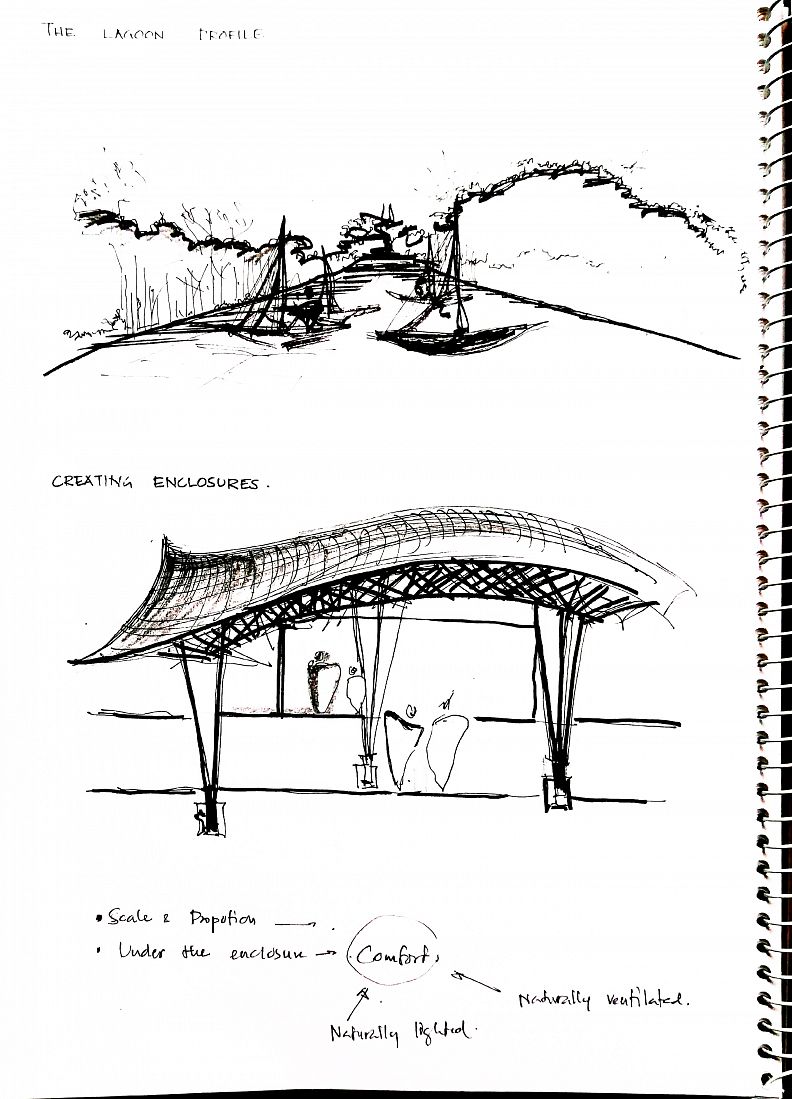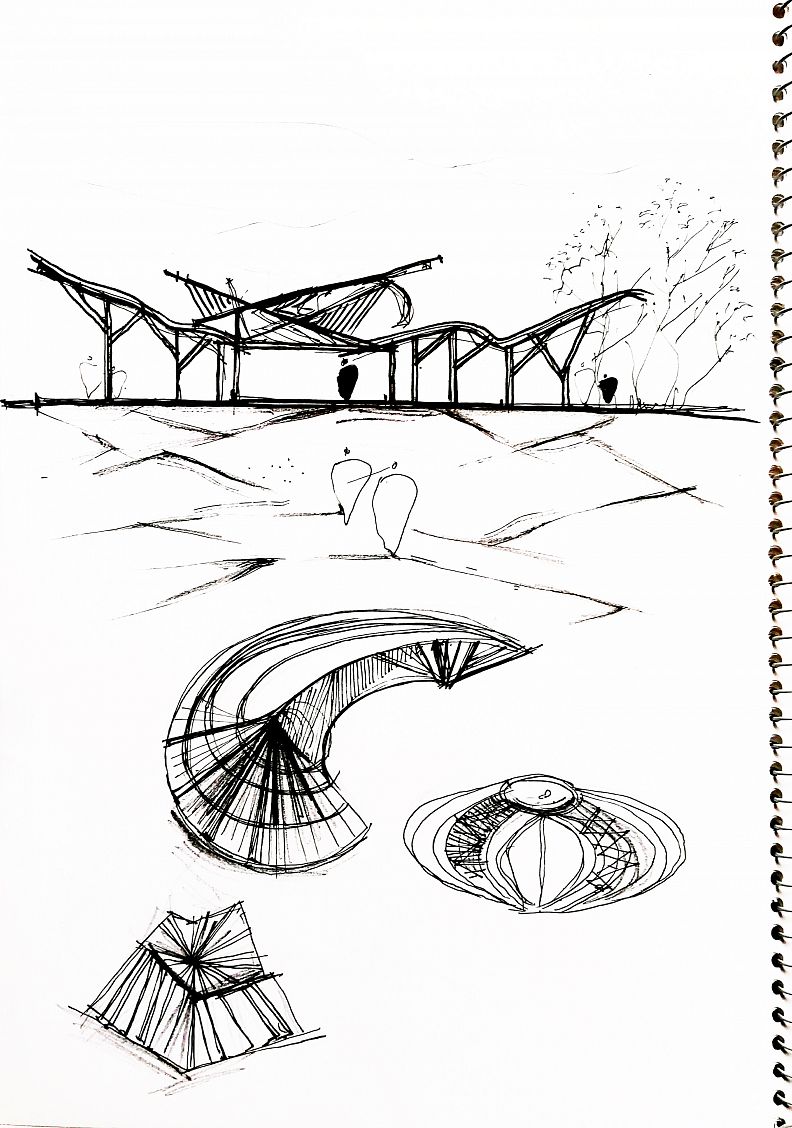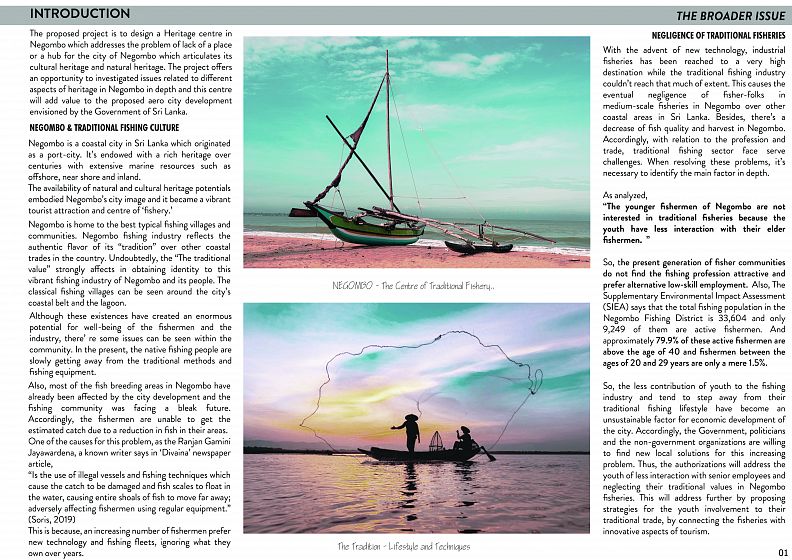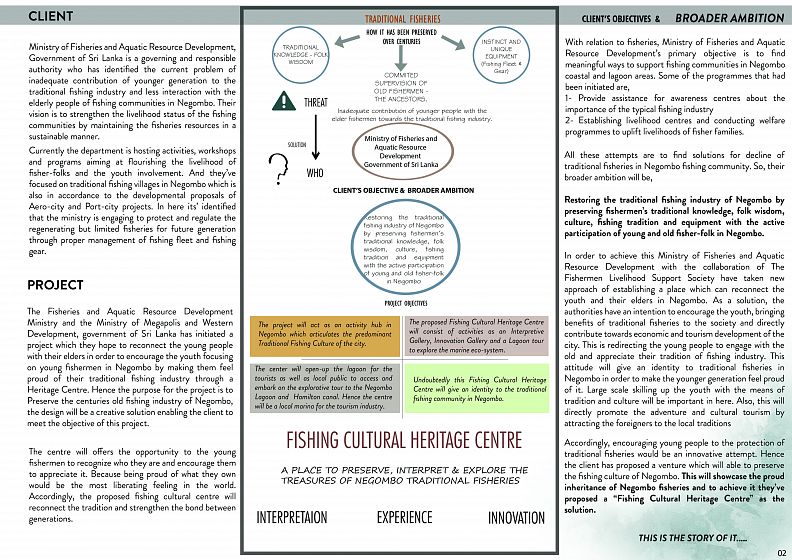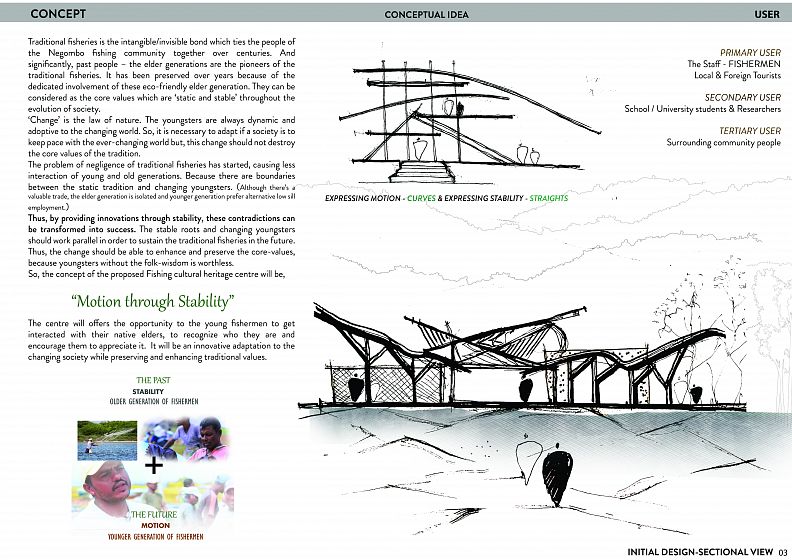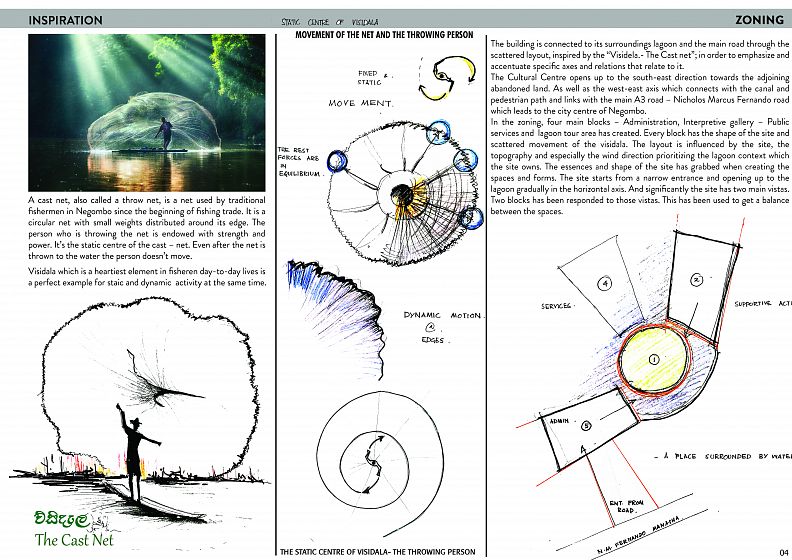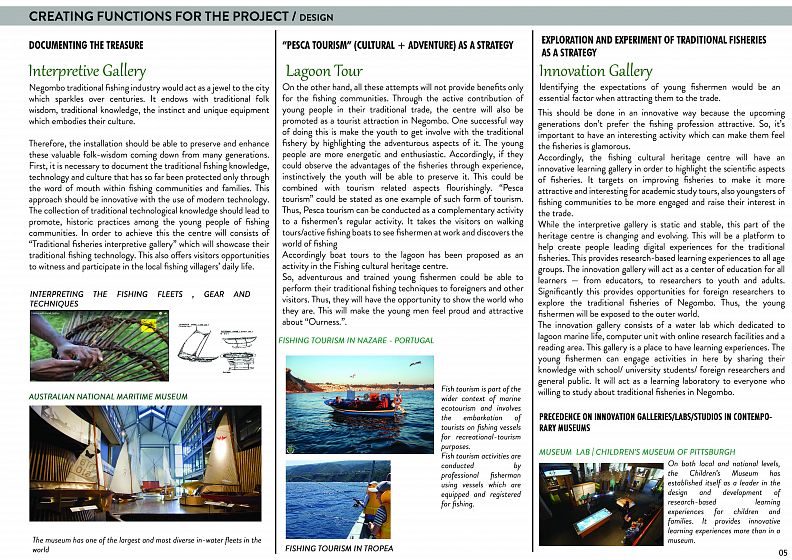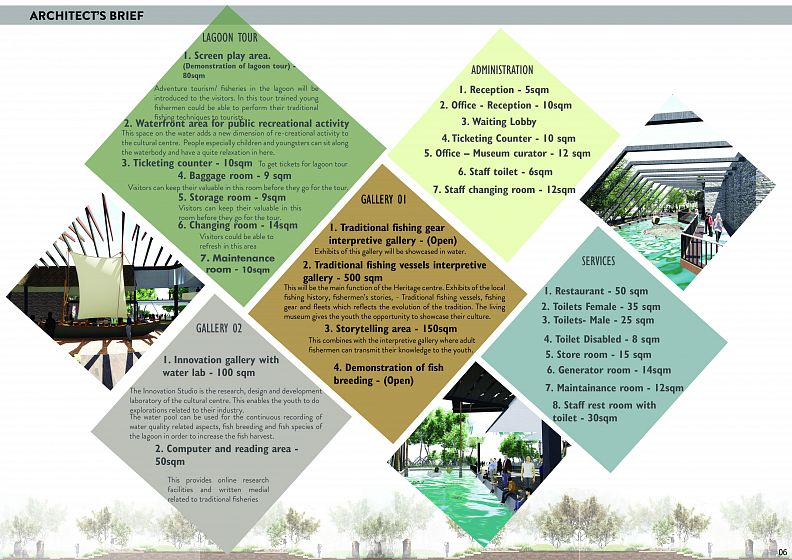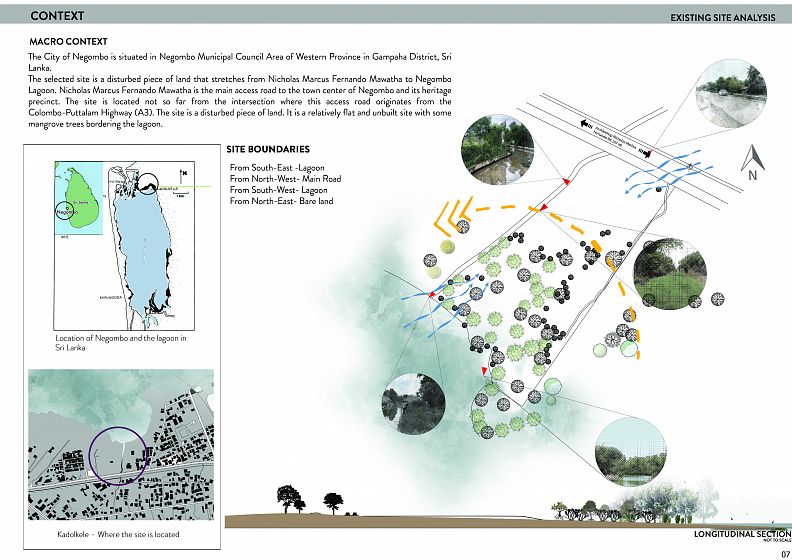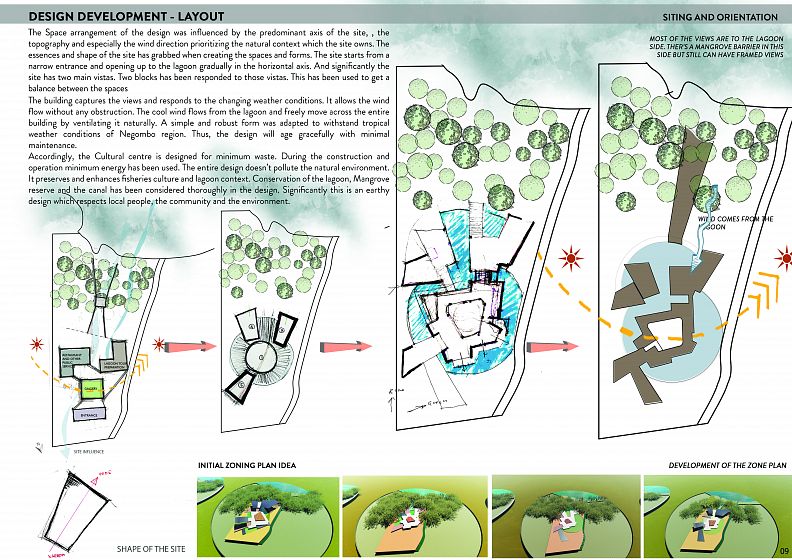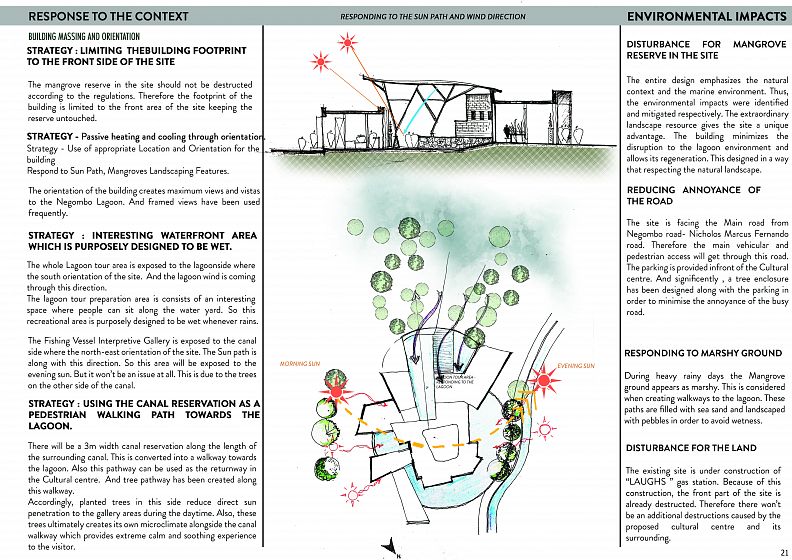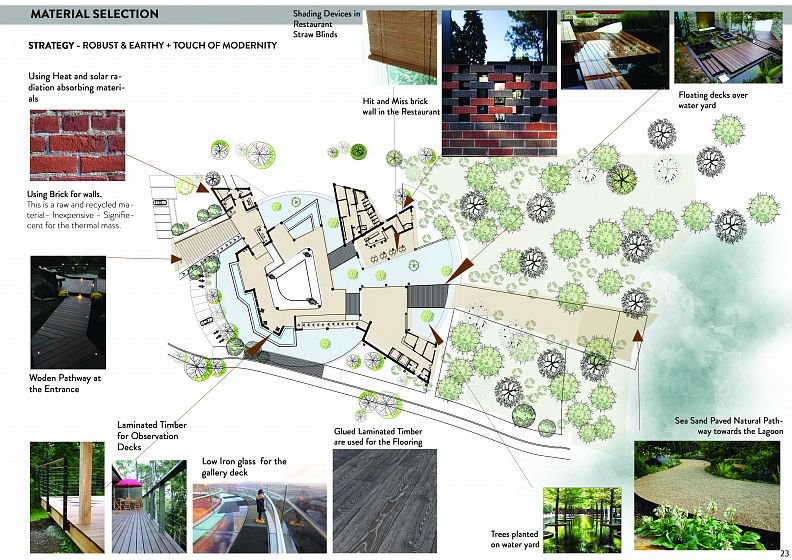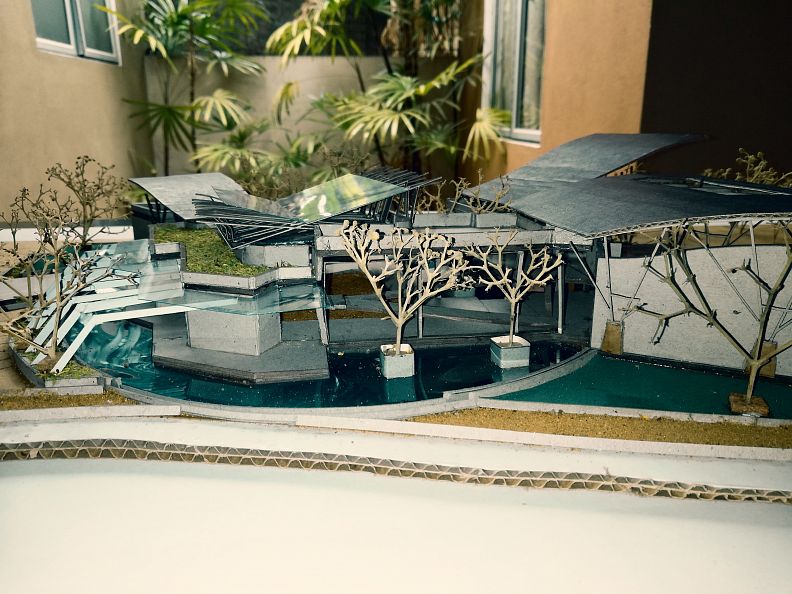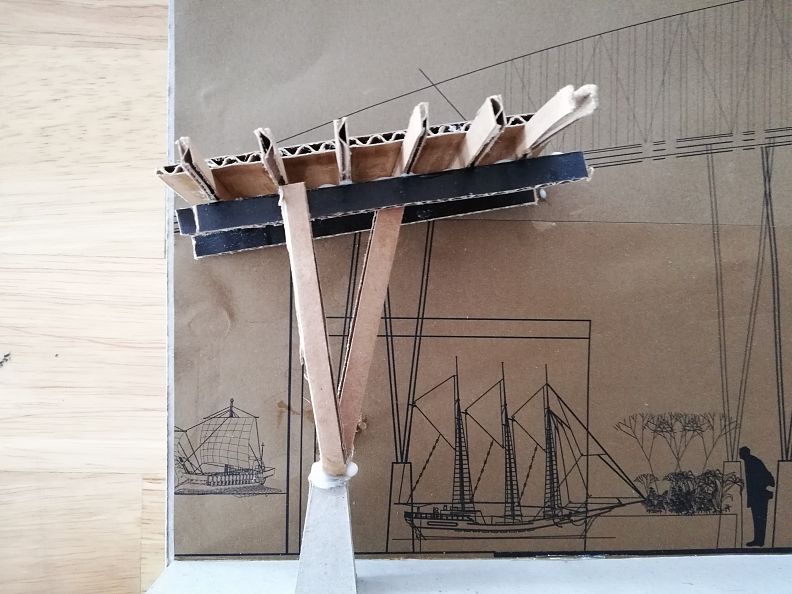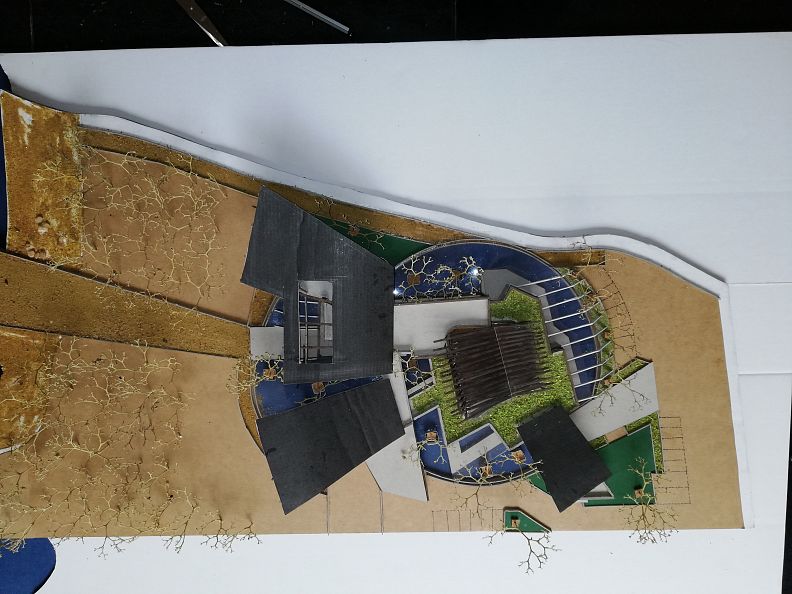Fishing Cultural Heritage Centre (Comprehensive Design Project-2019)

Project idea
The proposed project is to design a Heritage centre in Negombo which addresses the problem of lack of a place or a hub for the city of Negombo which articulates its cultural heritage and natural heritage. The project offers an opportunity to investigated issues related to different aspects of heritage in Negombo in depth and this centre will add value to the proposed aero city development envisioned by the Government of Sri Lanka.
NEGOMBO & TRADITIONAL FISHING CULTURE
Negombo is a coastal city in Sri Lanka which originated as a port-city. It’s endowed with a rich heritage over centuries with extensive marine resources such as offshore, near shore and inland.
The availability of natural and cultural heritage potentials embodied Negombo’s city image and it became a vibrant tourist attraction and centre of ‘fishery.’
Negombo is home to the best typical fishing villages and communities. Negombo fishing industry reflects the authentic flavor of its “tradition” over other coastal trades in the country. Undoubtedly, the “The traditional value” strongly affects in obtaining identity to this vibrant fishing industry of Negombo and its people. The classical fishing villages can be seen around the city’s coastal belt and the lagoon.
Although these existences have created an enormous potential for well-being of the fishermen and the industry, there’ re some issues can be seen within the community. In the present, the native fishing people are slowly getting away from the traditional methods and fishing equipment.
Also, most of the fish breeding areas in Negombo have already been affected by the city development and the fishing community was facing a bleak future. Accordingly, the fishermen are unable to get the estimated catch due to a reduction in fish in their areas.
One of the causes for this problem, as the Ranjan Gamini Jayawardena, a known writer says in ‘Divaina’ newspaper article,
“Is the use of illegal vessels and fishing techniques which cause the catch to be damaged and fish scales to float in the water, causing entire shoals of fish to move far away; adversely affecting fishermen using regular equipment.” (Soris, 2019)
This is because, an increasing number of fishermen prefer new technology and fishing fleets, ignoring what they own over years.
THE BROADER ISSUE-Negligence of traditional fisheries
With the advent of new technology, industrial fisheries has been reached to a very high destination while the traditional fishing industry couldn’t reach that much of extent. This causes the eventual negligence of fisher-folks in medium-scale fisheries in Negombo over other coastal areas in Sri Lanka. Besides, there’s a decrease of fish quality and harvest in Negombo. Accordingly, with relation to the profession and trade, traditional fishing sector face serve challenges. When resolving these problems, it’s necessary to identify the main factor in depth.
As analyzed,
“The younger fishermen of Negombo are not interested in traditional fisheries because the youth have less interaction with their elder fishermen. ”
So, the present generation of fisher communities do not find the fishing profession attractive and prefer alternative low-skill employment. Also, The Supplementary Environmental Impact Assessment (SIEA) says that the total fishing population in the Negombo Fishing District is 33,604 and only 9,249 of them are active fishermen. And approximately 79.9% of these active fishermen are above the age of 40 and fishermen between the ages of 20 and 29 years are only a mere 1.5%.
So, the less contribution of youth to the fishing industry and tend to step away from their traditional fishing lifestyle have become an unsustainable factor for economic development of the city. Accordingly, the Government, politicians and the non-government organizations are willing to find new local solutions for this increasing problem. Thus, the authorizations will address the youth of less interaction with senior employees and neglecting their traditional values in Negombo fisheries. This will address further by proposing strategies for the youth involvement to their traditional trade, by connecting the fisheries with innovative aspects of tourism.
CLIENT
Ministry of Fisheries and Aquatic Resource Development, Government of Sri Lanka is a governing and responsible authority who has identified the current problem of inadequate contribution of younger generation to the traditional fishing industry and less interaction with the elderly people of fishing communities in Negombo. Their vision is to strengthen the livelihood status of the fishing communities by maintaining the fisheries resources in a sustainable manner.
Currently the department is hosting activities, workshops and programs aiming at flourishing the livelihood of fisher-folks and the youth involvement. And they’ve focused on traditional fishing villages in Negombo which is also in accordance to the developmental proposals of Aero-city and Port-city projects. In here its’ identified that the ministry is engaging to protect and regulate the regenerating but limited fisheries for future generation through proper management of fishing fleet and fishing gear.
CONTEXT
MACRO CONTEXT
The City of Negombo is situated in Negombo Municipal Council Area of Western Province in Gampaha District, Sri Lanka.
The selected site is a disturbed piece of land that stretches from Nicholas Marcus Fernando Mawatha to Negombo Lagoon. Nicholas Marcus Fernando Mawatha is the main access road to the town center of Negombo and its heritage precinct. The site is located not so far from the intersection where this access road originates from the Colombo-Puttalam Highway (A3). The site is a disturbed piece of land. It is a relatively flat and unbuilt site with some mangrove trees bordering the lagoon.
Project description
PROJECT
The Fisheries and Aquatic Resource Development Ministry and the Ministry of Megapolis and Western Development, government of Sri Lanka has initiated a project which they hope to reconnect the young people with their elders in order to encourage the youth focusing on young fishermen in Negombo by making them feel proud of their traditional fishing industry through a Heritage Centre. Hence the purpose for the project is to Preserve the centuries old fishing industry of Negombo, the design will be a creative solution enabling the client to meet the objective of this project.
The centre will offers the opportunity to the young fishermen to recognize who they are and encourage them to appreciate it. Because being proud of what they own would be the most liberating feeling in the world. Accordingly, the proposed fishing cultural centre will reconnect the tradition and strengthen the bond between generations.
CLIENT'S OBJECTIVES & BROADER AMBITION
With relation to fisheries, Ministry of Fisheries and Aquatic Resource Development’s primary objective is to find meaningful ways to support fishing communities in Negombo coastal and lagoon areas. Some of the programmes that had been initiated are,
1- Provide assistance for awareness centres about the importance of the typical fishing industry
2- Establishing livelihood centres and conducting welfare programmes to uplift livelihoods of fisher families.
All these attempts are to find solutions for decline of traditional fisheries in Negombo fishing community. So, their broader ambition will be,
Restoring the traditional fishing industry of Negombo by preserving fishermen’s traditional knowledge, folk wisdom, culture, fishing tradition and equipment with the active participation of young and old fisher-folk in Negombo.
In order to achieve this Ministry of Fisheries and Aquatic Resource Development with the collaboration of The Fishermen Livelihood Support Society have taken new approach of establishing a place which can reconnect the youth and their elders in Negombo. As a solution, the authorities have an intention to encourage the youth, bringing benefits of traditional fisheries to the society and directly contribute towards economic and tourism development of the city. This is redirecting the young people to engage with the old and appreciate their tradition of fishing industry. This attitude will give an identity to traditional fisheries in Negombo in order to make the younger generation feel proud of it. Large scale skilling up the youth with the means of tradition and culture will be important in here. Also, this will directly promote the adventure and cultural tourism by attracting the foreigners to the local traditions.
Accordingly, encouraging young people to the protection of traditional fisheries would be an innovative attempt. Hence the client has proposed a venture which will able to preserve the fishing culture of Negombo. This will showcase the proud inheritance of Negombo fisheries and to achieve it they’ve proposed a “Fishing Cultural Heritage Centre” as the solution.
THIS IS THE STORY OF IT.....
CONCEPT
Traditional fisheries is the intangible/invisible bond which ties the people of the Negombo fishing community together over centuries. And significantly, past people – the elder generations are the pioneers of the traditional fisheries. It has been preserved over years because of the dedicated involvement of these eco-friendly elder generation. They can be considered as the core values which are ‘static and stable’ throughout the evolution of society.
‘Change’ is the law of nature. The youngsters are always dynamic and adoptive to the changing world. So, it is necessary to adapt if a society is to keep pace with the ever-changing world but, this change should not destroy the core values of the tradition.
The problem of negligence of traditional fisheries has started, causing less interaction of young and old generations. Because there are boundaries between the static tradition and changing youngsters. (Although there’s a valuable trade, the elder generation is isolated and younger generation prefer alternative low sill employment.)
Thus, by providing innovations through stability, these contradictions can be transformed into success. The stable roots and changing youngsters should work parallel in order to sustain the traditional fisheries in the future. Thus, the change should be able to enhance and preserve the core-values, because youngsters without the folk-wisdom is worthless.
So, the concept of the proposed Fishing cultural heritage centre will be,
“Motion through Stability”
The centre will offers the opportunity to the young fishermen to get interacted with their native elders, to recognize who they are and encourage them to appreciate it. It will be an innovative adaptation to the changing society while preserving and enhancing traditional values.
INSPIRATION - (jsisoe,) - The Cast Net
A cast net, also called a throw net, is a net used by traditional fishermen in Negombo since the beginning of fishing trade. It is a circular net with small weights distributed around its edge. The person who is throwing the net is endowed with strength and power. It’s the static centre of the cast – net. Even after the net is thrown to the water the person doesn’t move.
Visidala which is a heartiest element in fisheren day-to-day lives is a perfect example for staic and dynamic activity at the same time.
ZONING
The building is connected to its surroundings lagoon and the main road through the scattered layout, inspired by the “Visidela.- The Cast net”; in order to emphasize and accentuate specific axes and relations that relate to it.
The Cultural Centre opens up to the south-east direction towards the adjoining abandoned land. As well as the west-east axis which connects with the canal and pedestrian path and links with the main A3 road – Nicholos Marcus Fernando road which leads to the city centre of Negombo.
In the zoning, four main blocks – Administration, Interpretive gallery – Public services and lagoon tour area has created. Every block has the shape of the site and scattered movement of the visidala. The layout is influenced by the site, the topography and especially the wind direction prioritizing the lagoon context which the site owns. The essences and shape of the site has grabbed when creating the spaces and forms. The site starts from a narrow entrance and opening up to the lagoon gradually in the horizontal axis. And significantly the site has two main vistas. Two blocks has been responded to those vistas. This has been used to get a balance between the spaces.
Technical information
FOUNDATION
The geological features of the Kadol Kele @ Negombo Lagoon – where the selected site is located,
• The predominant soil in the site is poorly drained organic soil. they are dark brown to black in color. waterlogged mineral subsoil can be seen at the bottom.
• Due to some constructions, layers of new red gravel soil have spread over the site. all these soils contain pyrites (compounds of iron and sulphur) to the extent that they are potential acid sulphate soils.
• The bog soils bordering the lagoon become saline due to tidal influence. during heavy rainy days the surface soil appears as marshy.
• The soil in this site is well drained with very little accumulation of organic matter.
• The Mangroves have well-developed root system and are highly efficient in nutrient absorption.
When considering these factors, the foundation should not obstruct the root systems of the Mangroves. And the soil pollution should be minimized. Thus, Shallow foundation type was proposed for the design. Independent footings were used as needed. So, each column has its individual footing. The footing directly transfers the loads form the column to the soil.
FORM AND STRUCTURE
The Form has been achieved through the open spaces, solid and voids and the frame structure. This is very simple and scenic. The openings were carefully used. They were designed without disturbing the natural views of the lagoon.
The roof is predominantly inspired by the lagoon profile and sea waves. The curved roofs, also emphasize the idea of the surrounding marine environment.
The roof itself is a graphical representation of the sea waves which is a heartiest element in fishermen day-today lives. Its created as floating. Independent from the entire building. It doesn’t; actually a roof. It’s an enclosure to the building. It designed to show how the centre going to merge with the natural environmental pattern.
These are almost totally covered with thin bendable photovoltaic panels supplying enough energy to the Cultural Centre.
ENVIRONMENTAL BEHAVIOUR- FLOATING ROOFS
STRATEGY - Versatile use of EUCALYPTUS GLUED laminated timber for roofing, columns, beams, flooring and decking.
To emphazises the “motion” in concept the roof structure was proposed to be designed in an innovative way. Due to the marshy conditions of the site the load of the roof should not be directly transffered to the building. In order to overcome that, a structure which is independent from the building has been suggested.
The floaating curved roofs provide less impact on site.
HEATING AND VENTILATION OF THE DESIGN
STRATEGY : Photovoltaic solar panels ON TOP OF THE CURVED ROOFS
The floating curved roofs are almost totally covered with thin bendable photovoltaic panels supplying enough energy to the Cultural Centre, while the remaining slab areas are used as a green roofs.Naturally occurring air flow patterns around and in the building to introduce outdoor air into the space.
Enhance the natural air flow - Wind Path. Layout of interior walls and Building Shape maximize the cross ventilation throughout the centre. The space in between the floating roof and brick walls allows the wind to come inside the building. Special roof design in the storytelling area of the gallery allows a simple stack ventilation process in warmer days.
MATERIAL SELECTION
The use of raw materials has made the right choice for a marine environment. Each material was chosen to blend with the nature and to emphasize “Earthy and rough Interior.” Also this symbolizes the concept “Motion through Stability.” The colors are lightly used as Yellow, Brown and Orange. Balance between highlighting and neutral colors provide a perfect combination with nature. for the floor areas except service ares laminated timber has been used.
STRATEGY - PREVENTING DIRECT METAL USAGE.
Another significant aspect of this design is preventing direct Metal- Steel usage. When a metal is exposed to underwater or wet environments it occurs difficulties. Steel is a hard material to manage in a marine environment.
So, alternative atmospheric materials have been used where ever STEEL needed.
HIT & MISS BRICKS
Patterned brick walls - Hit & Miss Bricks has been used for the restaurant area to get the breathing effect. environmentally sustainable, affordable.
The breathing wall emphasizes draw in air and dappled light to spaces beyond. Brickwork is backlit to illuminate and highlight its texture.
Flagstones are used to withstand marine weather conditions and to enhance the natural environment. The color combinations of these materials make it easy to enhance the natural environment. - The Lagoon Life.
Sun dried exposed bricks are used for the walls of the design. But a water resistive coating is applied on the brickwork to withstand moisture. This brick walls in their original color gives the feeling of untouched simplicity. Also, Brickwork can easily reclaime. (reuse or crushing)
BUILDING SERVICES - -DRAINAGE AND RAIN WATER
STRATEGY : DETENTION SYSTEM FOR RAINWATER DRAINING
Within a building, stormwater detention is accomplished by directing the water from the roof to a detention tank. The tank is then allowed to overflow. This process has been slightly changed in this design as rainwater from roofs are collecting to surrounding water yard. So in here the water yard will act as “Rainwater Detection Tank.” The rainwater which flows from roofs will collected to the water yard around the building in appropriate points as mentioned in the rainwater layout plan. And the water will overflow to the road drain.
BUILDING SERVICES - SEWAGE
STRATEGY - Implementing SUSTAINABLE on-site sewage and wastewater treatment.
This is proposed to improve wastewater management. For the toilets dual flush WCs has been installed. This helps in improving the environmental and health aspects of the design.
BUILDING SERVICES - SEWAGE & WASTE WATER
STRATEGY : SPACE PLANNING - SERVICES ARE SEPARATED FROM THE COMMUNITY ACTIVITIES
By using above mentioned strategies sewage and waste water of the entire design will be discharged and released in a sustainable manner. Any process or strategy does not harm the biodiversity site owns. Anaerobic septic tank clears the waste successfully but as a negative impact, the odour caused by the ‘Effluent’ can be identified. In order to mitigate this issue, at the beginning of the design all the service functions- The toilets was placed away from the public community spaces. So if the odour occurs it will not bother people.
Co-authors
-
